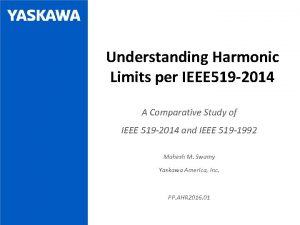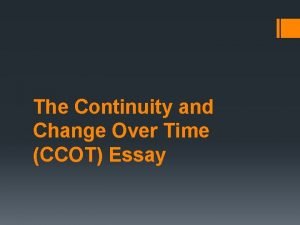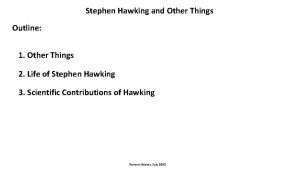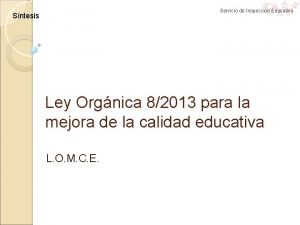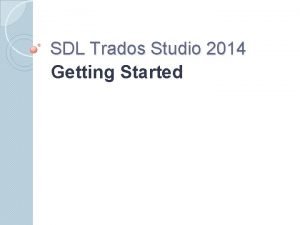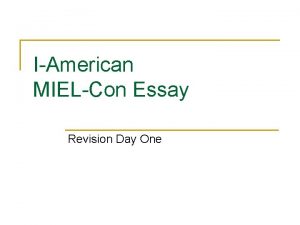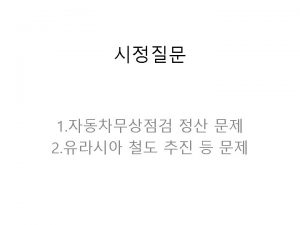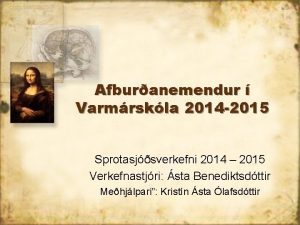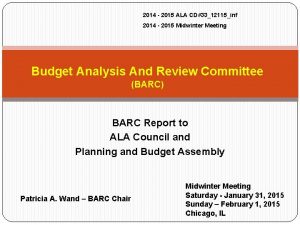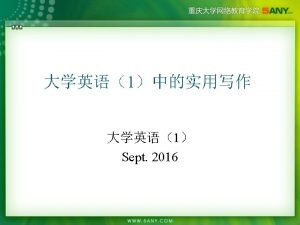IAMERICAN UNIT 2014 2015 IAmerican Unit 2014 2015



















- Slides: 19

I-AMERICAN UNIT 2014 -2015 I-American Unit 2014 -2015

Start Big (Background/Current Discussion) • People in America often struggle to balance their cultural identity with the dominant “American” culture that surrounds them. Oftentimes, the dominant “American” culture can leave an individual feeling frustrated, lost, and confused.

Narrow in. (Maybe offer a reason or an effect of the discussion) • Instead of trying to fit in to the dominant culture, the individual would rather reject it entirely, but that is almost impossible when a person is surrounded by it. Naomi Shabib Nye and Khaled Mattawa examine the implications of this struggle and offer ways to find the balance they need.

Bridge to Thesis/Thesis Statement • While living in America, Susan from “Hamadi, ” the father from “My Father and the Fig Tree, ” and the speaker from “Borrowed Tongue” continue to practice traditions that connect them to their cultural backgrounds which allows them to maintain their cultural identity.

Introduction People in America often struggle to balance their cultural identity with the dominant “American” culture that surrounds them. Oftentimes, the dominant “American” culture can leave an individual feeling frustrated, lost, and confused. Instead of trying to fit in to the dominant culture, the individual would rather reject it entirely, but that is almost impossible when a person is surrounded by it. Naomi Shabib Nye and Khaled Mattawa examine the implications of this struggle and offer ways to find the balance they need. While living in America, Susan from “Hamadi, ” the father from “My Father and the Fig Tree, ” and the speaker from “Borrowed Tongue” continue to practice traditions that connect them to their cultural backgrounds which allows them to maintain their cultural identity.

Restate Thesis (use different words) Susan from “Hamadi, ” the father from “My Father and the Fig Tree, ” and the speaker from “Borrowed Tongue” are able to incorporate their cultural roots with the dominant “American” culture and therefore create their own cultural identity.

Re-present evidence from Body Paragraph #1 • Susan releases her judgment of others and typical American values and instead learns compassion and gains the ability to cherish all individuals for who they are.

Re-present evidence from Body Paragraph #2 • The father from “My Father and the Fig Tree” rejects any replica of his culture and patiently waits for a symbol of its purity to become part of his life again.

Re-present evidence from Body Paragraph #3 • Finally, the speaker from “Borrowed Tongue” realizes that he doesn’t have to choose between the two—he can create a third option and be comfortably both.

So what? • When these characters choose accept their cultural identity, whether through compassion, patience, or revelation, they overcome their self-doubt and the cultural oppression that created it. If young people stand up for who they are and show each other why their differences make them strong, they can lead others to do so as well.

Body Paragraph Example Susan from “Hamadi” continues to practice traditions that connect her to her cultural background which allows her to maintain her cultural identity. Susan, having been born in the Middle East but raised in America, struggles to figure out who she is among a culture she isn’t comfortable with. In response to Tracy declaring her “hatred” toward Debbie, Susan says, “Remember, here in this book—wait and I’ll find it—where Gibran says that loving teaches us the secrets of our hearts and that’s the way we connect to all of Life’s heart? You’re not talking about liking or loving, you’re talking about owning” (139 -140). Susan quotes a Lebanese author in hopes of making sense of the world around her for her sake and Tracy’s. When struggling with something, she goes back to the roots of her culture to find meaning. Going back to her roots shows that she values it, trusts it, and wants that culture to guide her—even as she lives her life in the middle of America. While consulting a book might not be considered a tradition, it is certainly an action that she performs repeatedly and works toward maintaining her cultural identity.

Susan from “Hamadi” continues to practice traditions that connect her to her cultural background which allows her to maintain her cultural identity. Hamadi says, “That was an • Susan says, “Remember, Aramaic word that just here in this book—wait drifted into my mouth— and I’ll find it—where the true language of the Gibran says that loving Bible, you know, the teaches us the secrets of language Jesus Christ our hearts and that’s the himself spoke” (143). way we connect to all of Life’s heart? You’re not talking about liking or loving, you’re talking about owning” (139 -140).

MAIN IDEA and EVIDENCE Please take a moment to go through your essay and highlight the MAIN IDEA sentences from your body paragraphs. Next, highlight your QUOTES from each of your body paragraphs.

Main Idea + Evidence Susan from “Hamadi” continues to practice traditions that connect her to her cultural background which allows her to maintain her cultural identity. Susan, having been born in the Middle East but raised in America, struggles to figure out who she is among a culture she isn’t comfortable with. In response to Tracy declaring her “hatred” toward Debbie, Susan says, “Remember, here in this book—wait and I’ll find it—where Gibran says that loving teaches us the secrets of our hearts and that’s the way we connect to all of Life’s heart? You’re not talking about liking or loving, you’re talking about owning” (Nye 139 -140). Susan quotes a Lebanese author in hopes of making sense of the world around her for her sake and Tracy’s. When struggling with something, she goes back to the roots of her culture to find meaning. Going back to her roots shows that she values it, trusts it, and wants that culture to guide her—even as she lives her life in the middle of America. While consulting a book might not be considered a tradition, it is certainly an action that she performs repeatedly and helps her figure out, and maintain, who she is as an individual.

Introduction to Evidence • Susan, having been born in the Middle East but raised in America, struggles to figure out who she is among a culture she isn’t comfortable with. In response to Tracy declaring her “hatred” toward Debbie, Susan says, “…. . • Green: A brief summary/background of the story • Red: What is happening right before the quote

Evidence (Reminders) The narrator states, “Hamadi liked to use Spanish words” (136). • Comma needed after the signal phrase • Some common signal phrases: states, says, narrates, recalls, asks, wonders, exclaims • Do not say, “In the text it says…” or “The evidence to support this is…” Instead, tell me who says or thinks the quoted line. • Incorrect: In the text it says “Hamadi liked to use Spanish words. ” • Correct: The narrator states, “Hamadi liked to use Spanish words. ”

Evidence (Reminders) • Is it cited correctly? • Example: The narrator feels that she has been punched in the stomach and states, “Though I liked the sharp taste of garlic and pepper biting my tongue, I stopped eating my mother’s food” (Keller 106). • Parentheses are around the author and page number • Page number is written without “pg” • Period comes after the parentheses (not inside the quotes)

Link: What does the quote say? What does it mean? Why does it matter? • Susan from “Hamadi” continues to practice traditions that connect her to her cultural background which allows her to maintain her cultural identity. Susan, having been born in the Middle East but raised in America, struggles to figure out who she is among a culture she Susan says, “Remember, here in this book—wait and I’ll find it—where Gibran says that loving teaches us the secrets of our hearts and that’s the way we connect to all of Life’s heart? You’re not talking about liking or loving, you’re talking about owning” (Nye 139 -140). Susan quotes a Lebanese author in hopes of making sense of the world around her for her sake and Tracy’s. When struggling with something, she goes back to the roots of her culture to find meaning. Going back to her roots shows that she values it, trusts it, and wants that culture to guide her—even as she lives her life in the middle of America. While consulting a book might not be considered a tradition, it is certainly an action that she performs isn’t comfortable with. In response to Tracy declaring her “hatred” toward Debbie, repeatedly and helps her figure out, and maintain, who she is as an individual.

Concluding Sentence Susan from “Hamadi” continues to practice traditions that connect her to her cultural background which allows her to maintain her cultural identity. Susan, having been born in the Middle East but raised in America, struggles to figure out who she is among a culture she isn’t comfortable with. In response to Tracy declaring her “hatred” toward Debbie, Susan says, “Remember, here in this book— wait and I’ll find it—where Gibran says that loving teaches us the secrets of our hearts and that’s the way we connect to all of Life’s heart? You’re not talking about liking or loving, you’re talking about owning” (139 -140). Susan quotes a Lebanese author in hopes of making sense of the world around her for her sake and Tracy’s. When struggling with something, she goes back to the roots of her culture to find meaning. Going back to her roots shows that she values it, trusts it, and wants that While consulting a book might not be considered a tradition, it is certainly an action that she performs repeatedly and helps her figure out, and maintain, who she is as an individual. culture to guide her—even as she lives her life in the middle of America.
 Unit 10, unit 10 review tests, unit 10 general test
Unit 10, unit 10 review tests, unit 10 general test Teacher twins 2014
Teacher twins 2014 Health systems building blocks
Health systems building blocks Teacher twins@2014
Teacher twins@2014 Ddb board regulation no.1 series of 2014
Ddb board regulation no.1 series of 2014 Point of common coupling (pcc)
Point of common coupling (pcc) Continuity and change thesis
Continuity and change thesis Delinquency report pnp sample
Delinquency report pnp sample Stephen hawking
Stephen hawking 2014 special olympics
2014 special olympics Social services and wellbeing act principles
Social services and wellbeing act principles Social services and wellbeing (wales) act 2014 easy read
Social services and wellbeing (wales) act 2014 easy read Agosto 2014
Agosto 2014 Sfc 2014 portal
Sfc 2014 portal Orden 3814/2014
Orden 3814/2014 Trados studio 2014
Trados studio 2014 Riverbed gartner sd wan
Riverbed gartner sd wan Enade 2014
Enade 2014 Veterinary nurse conduct and discipline rules 2014
Veterinary nurse conduct and discipline rules 2014 Enade 2014
Enade 2014





